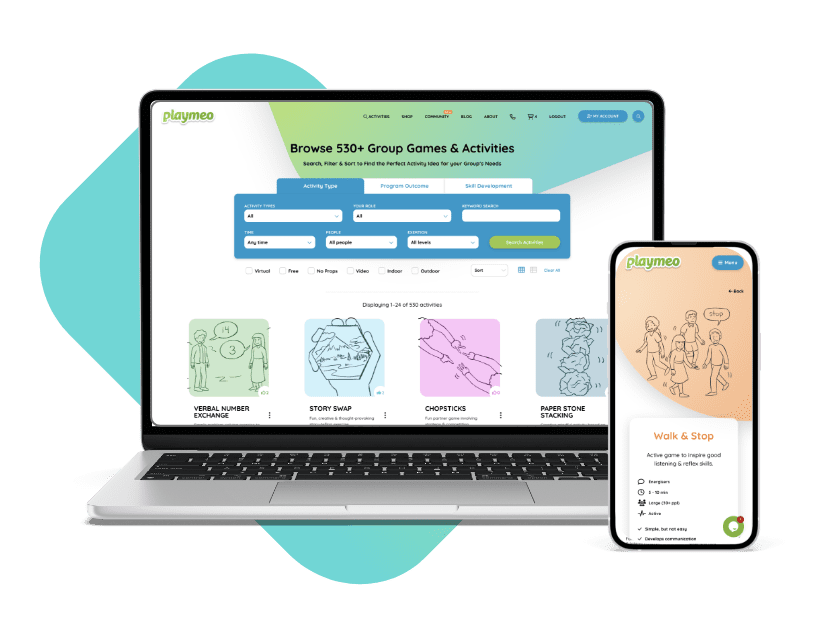Creating Intentional Safe Learning Environments
If Challenge by Choice acknowledges that people tend to enter into a new experience from within their Comfort Zones, Full Value is the vehicle that they can use to arrive safely at the other end.
In the context of creating powerful spaces within which people can interact, establishing Full Value behavioural norms that values everyone’s contribution is all about keeping this space as fun as possible, as much as keeping it as ‘safe’ as possible.
All people have a right to be valued, and valuing oneself is as important as valuing others. Accordingly, Full Value creates a coherent, shared and conscious understanding (or agreement) about how people are expected to behave.
To not focus on this critical notion, is akin to driving without a seat belt – the longer the drive, the greater the chance of an accident.
You see, the longer people spend together, the more comfortable they become with one another. Slowly, their interactions move into the Stretch Zone, and, it is at this point, we need more than just good intentions to keep things moving smoothly. As with all things in the Stretch Zone, your group will need assistance.
.
What Is Full Value?
.
Full Value – or as it has been historically referred to as the Full Value Contract – is a device (much like a seatbelt) consisting of a set of behavioural norms that help individuals and groups to achieve their program goals in a safe and supportive environment.
No matter what group or program you care to mention – from a weekly youth group meeting to multi-day, team-building workshops – every program will benefit from the process of consciously defining what is expected of people’s behaviours.
That said, programs that involve the same people over a long period of time – such as schools, corporate and community organisations – need and benefit from the structure offered by a Full Value agreement significantly more than shorter, one-off programs. Longer programs have more opportunities to develop the hidden potential of the group, and therefore, achieve mightier and more challenging goals.
.
What Does Full Value Do?
.
The philosophy of Full Value has been the cornerstone of Project Adventure’s work and has many and varied forms. It may be written or oral, explicit or implicit, casual or formal. No matter what shape it takes, it is a shared creation, and typically embraces three broad tasks:
- To understand and create safe behavioural norms under which the group will operate;
- Seek a commitment to adhere to these norms by everyone in the group; and
- To accept a shared responsibility for the maintenance of the group.
Importantly, Full Value ought to fit the unique goals, characteristics and spirit of your group.
Therefore, the shape of a Full Value agreement you develop for a one-hour basketball clinic with children will differ significantly from that created for a residential therapy group for adults. So will the agreement formed between adjudicated youth and that developed for a one-day professional conference.
At one end of the spectrum, the way you lead your program and interact with your group will communicate implicitly what is expected. At the other extreme, you may have to instruct everyone to sign a contract that explicitly states what is and is not appropriate behaviour.
With clearly defined boundaries, people know where they stand and comfortably make decisions about the type and level of their involvement. The more ambiguous these boundaries are, the less inclined your group will be to interact outside their Comfort Zone.
.
Why Bother with Full Value Norms?
.
Perhaps your group really does care for one another and reflects a wonderfully safe and supportive culture. Maybe. Maybe not.
Most groups, no matter the reason for their existence or length of program, will benefit from some form of ‘conversation’ which aims to guide their behaviours, and ultimately, to leverage their fullest potential. Even groups that have been together for a long time – such as a school class, or a work team – will gain a lot from the process of sharing and making conscious those aspects of their collective norms that are acceptable, and those that are not.
In my experience, much of the discussion reflects typically unwritten, unspoken laws of ’how we do things around here.’ Naturally, for those groups that are just forming, or will only gather for a short time, there is no such thing and will necessarily start with a clean slate.
Even if the list of ‘norms’ is exactly the same for every member of the group, the process of actually sharing and making this agreement a conscious one benefits everybody. It will set your group up for success because its potential will not get bogged down in petty grievances and misunderstandings further down the track.
.
How Do You Create A Full Value Agreement?
.
The creation of a Full Value agreement or set of behavioural norms tends to fall into one of two categories:
1. Pre-Determined
This form of Full Value does most of the work for your group in advance. While quick and efficient, you will want to invite your group to discuss what each of the tenets means to establish some form of ‘buy-in.’
Here are four examples:
-
- Play Fair, Play Hard, Play Safe
– Ideal for very short programs involving very young people - Respect for Self, Others & the Environment
– Ideal for short programs involving young people - Be Here, Be Safe, Be Honest, Set Goals, Let Go & Move On, Care for Self & Others
– Ideal for young people and adults
– Click here to learn more about the outcomes of embracing this powerful full value framework - Be Present, Pay Attention, Speak Your Truth, Be Open to Outcomes, Create a Safe Environment
– Ideal for adults involved in longer programs
- Play Fair, Play Hard, Play Safe
2. Group-Generated
This category reflects the essence of Full Value, whereby an agreed framework is created entirely, or in part, by your group. This process establishes a higher degree of buy-in, but it will take more time. Ideal for longer-term programs, or in situations where buy-in is essential to your group’s success.
Here are some examples:
-
- Adapted
– You may wish to start with a pre-determined framework (above) and invite your group to modify or build upon it, coming up with their own words. - Do It Yourself
– Starting from scratch, your group forms the words to their own behavioural framework. Ideally, these norms are written down, but oral agreements work too. - Experiential or Activity-based
– Activities such as The Being and The Palm Tree form the basis of your group’s discussion to capture a set of agreed-upon norms. Presented visually, this technique can be very engaging because it involves multiple styles of learning.
- Adapted
.
Essential Tools
.
Leveraging Full Value is just one of a set of five essential tools I use to intentionally create a positive learning environment and help groups amplify whatever they’re trying to get done.
You can learn more about playmeo’s innovative approach to education by clicking the links below.
- FUNN (Functional Understanding Not Necessary)
- Goal-Setting
- Honouring Choice
- Learning Through Reflection
.
This article about creating Full Value behavioural norms has been adapted from No Props No Problem: 150+ Outrageously Fun Group Games & Activities Using No Equipment and Serious Fun: Your Step-by-Step Guide to Leading Remarkably Fun Programs That Make a Difference.






